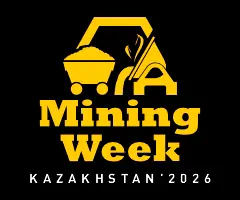Important indicators of brine properties and sources of pressurized strong brines in the Amu Darya oil and gas basin
 A.R. Deryaev
A.R. Deryaev
State Concern “Тurkmengaz”, Ashgabat, Turkmenistan
Russian Mining Industry №2 / 2025 p.146-152
Abstract: Studying the origin and specific features of pressurized strong brine reservoirs in the Amu Darya basin is of significant importance at the present time. It helps to enhance insights into the geological and climatic history of the region, as well as contributes to the understanding the processes of sedimentary rock formation and its application in various fields of science and industry. The aim of this research is to study the geological and geochemical features of the pressurized strong brine reservoirs within the Amu Darya basin. This will help to understand how these properties affect the processes of hydrocarbon recovery. The study applied methods of geologic analysis and mapping of pressurized strong brine manifestations. In addition, chemical analysis of samples was used to determine the composition of the brines. The work produced a detailed description of the geological structure of the pressurized strong brine reservoirs, including their layered structure, texture and specific features of mineral distribution. Chemical analysis of the samples performed as part of the study helped to identify the key minerals that are present in the strong brines, such as gypsum, anhydrite and halite. In addition, the paper provides an analysis of the geological processes that resulted in formation of the brines. This allows a better understanding of the formation mechanisms and evolution of these sedimentary rocks during the history of the area. The data obtained make it possible to draw conclusions about the age and the formation conditions of the pressurized strong brine reservoirs in the area, as well as to assume possible changes in the geological and climatic history of the region. These results play an important role in improving our insights into the development of the geologic structure of Central Asia and may be useful for further research into the geology and climatology of the region.
Keywords: pressurized strong brine manifestations, brines, strong brines, sedimentary rocks, minerals, hydrocarbons, oil and gas bearing basin, Central Asia
For citation: Deryaev A.R. Important indicators of brine properties and sources of pressurized strong brines in the Amu Darya oil and gas basin. Russian Mining Industry. 2025;(2):146–152. (In Russ.) https://doi.org/10.30686/1609-9192-2025-2-146-152
Article info
Received: 06.01.2025
Revised: 27.02.2025
Accepted: 01.03.2025
Information about the author
Annaguly R. Deryaev – Dr. Sci. (Eng.), Chief Research Associate, The State Concern “Тurkmengaz”, Ashgabat, Turkmenistan; e-mail: This email address is being protected from spambots. You need JavaScript enabled to view it.
References
1. Деряев А.Р. Регулирование реологических свойств утяжеленных тампонажных растворов при цементировании глубоких скважин в условиях аномально высокого пластового давления. Нефтяное хозяйство. 2024;(5);86–90. https://doi.org/10.24887/0028-2448-2024-5-86-90 Deryaev A.R. Regulation of rheological properties of weighted grouting solutions during cementing of deep wells under conditions of abnormally high reservoir pressure. Neftyanoe Khozyaystvo. 2024;(5);86–90. (In Russ.) https://doi.org/10.24887/0028-2448-2024-5-86-90
2. Deryaev A.R. Main characteristics of the geological structure of the evaporite formation of the Amu Darya syneclise. Grassroots Journal of Natural Resources 2024;7(2):251–273. https://doi.org/10.33002/nr2581.6853.070213
3. Khodayar M., Björnsson S. Conventional geothermal systems and unconventional geothermal developments: An overview. Open Journal of Geology 2024;14(2):196–246. https://doi.org/10.4236/ojg.2024.142012
4. Huddlestone-Holmes C.R., Arjomand E., Kear J. Long-term monitoring of decommissioned onshore gas wells. CSIRO Report EP2022-1246. CSIRO, Australia; 2022. https://doi.org/10.25919/bx5gzd28
5. Men X., Tao S., Liu Z., Tian W., Chen S. Experimental study on gas mass transfer process in a heterogeneous coal reservoir. Fuel Processing Technology. 2021;216:106779. https://doi.org/10.1016/j.fuproc.2021.106779
6. Vandeginste V., Ji Y., Buysschaert F., Anoyatis G. Mineralogy, microstructures and geomechanics of rock salt for underground gas storage. Deep Underground Science and Engineering. 2023;2(2):129–147. https://doi.org/10.1002/dug2.12039
7. Herut B., Rubin-Blum M., Sisma-Ventura G., Jacobson Y., Bialik O.M., Ozer T. et al. Discovery and chemical composition of the eastmost deep-sea anoxic brine pools in the Eastern Mediterranean Sea. Frontiers in Marine Science. 2022;9:1040681. https://doi.org/10.3389/fmars.2022.1040681
8. eine F., Zosseder K., Einsiedl F. Hydrochemical zoning and chemical evolution of the deep upper Jurassic thermal groundwater reservoir using water chemical and environmental isotope data. Water. 2021;13(9):1162. https://doi.org/10.3390/w13091162
9. Bang J.-H., Chae S.-C., Song K., Lee S.-W. Optimizing experimental parameters in sequential CO2 mineralization using seawater desalination brine. Desalination. 2021;519:115309. https://doi.org/10.1016/j.desal.2021.115309
10. Le Donne A., Tinti A., Amayuelas E., Kashyap H.K., Camisasca G., Remsing R.C. et al. Intrusion and extrusion of liquids in highly confining media: bridging fundamental research to applications. Advances in Physics: X. 2022;7(1):2052353. https://doi.org/10.1080/23746149.2022.2052353
11. Yan P., Shevchuk M., Wölke C., Pfeiffer F., Berghus D., Baghernejad M. et al. Blended salt electrolyte design for enhanced NMC811 || Graphite cell performance. Small Structures. 2024;5(4):2300425. https://doi.org/10.1002/sstr.202300425
12. John C.M., Kussanov I., Hawie N. Constraining stratal architecture and pressure barriers in the subsalt Karachaganak Carboniferous carbonate platforms using forward stratigraphic modelling. Marine and Petroleum Geology. 2021;124:104771. https://doi.org/10.1016/j.marpetgeo.2020.104771
13. Luo F., Gao S., Zhang S., Hu J., Dong E., Li M. Evolution law of tensile-shear fracture and deformation of variously shaped roadways. Geotechnical and Geological Engineering. 2023;41:4257–4270. https://doi.org/10.1007/s10706-023-02519-0
14. Du H., Dai F., Wei M., Li A., Yan Z. Dynamic compression–shear response and failure criterion of rocks with hydrostatic confining pressure: an experimental investigation. Rock Mechanics and Rock Engineering. 2021;54(2):955–971. https://doi.org/10.1007/s00603-020-02302-0
15. Stoltnow M., Weis P., Korges M. Hydrological controls on base metal precipitation and zoning at the porphyry-epithermal transition constrained by numerical modeling. Scientific Reports. 2023;13:3786. https://doi.org/10.1038/s41598-023-30572-5
16. Wang M., Luo G., Chen Z., Fang C. Stability analysis of salt structure drilling and its application to the Keshen 10 block of Kuqa depression in Tarim basin. Rock Mechanics and Rock Engineering. 2024;57(2):1171–1194. https://doi.org/10.1007/s00603-023-03605-8
17. Деряев А.Р. Бурение направленной разведочной скважины в мелководье Каспия. Горные науки и технологии. 2024;9(4):341–351. https://doi.org/10.17073/2500-0632-2024-02-217 Deryaev A.R. Directional drilling of an exploratory well in the shallow waters of the Caspian Sea. Mining Science and Technology (Russia). 2024;9(4):341–351. https://doi.org/10.17073/2500-0632-2024-02-217
18. Ondrasek G., Rengel Z. Environmental salinization processes: Detection, implications & solutions. Science of The Total Environment. 2021;754:142432. https://doi.org/10.1016/j.scitotenv.2020.142432
19. Деряев А.Р. Крепление ствола скважины при пластическом течении солей методом активного сопротивления. Нефтяное хозяйство. 2024;(7):89–93. https://doi.org/10.24887/0028-2448-2024-7-89-93 Deryaev A.R. Borehole fastening during the plastic flow of salts using the active resistant method. Neftyanoe Khozyaystvo. 2024;(7):89–93. (In Russ.) https://doi.org/10.24887/0028-2448-2024-7-89-93




